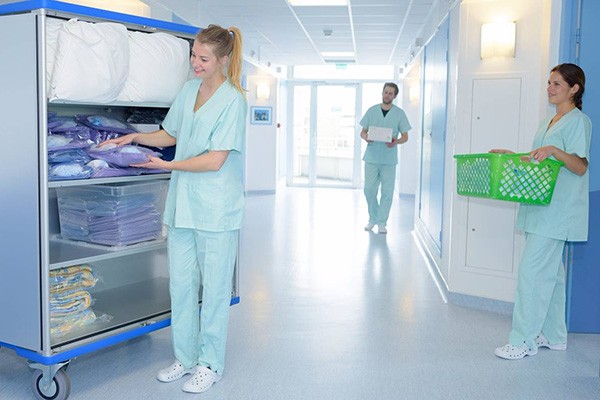As the country eases out of lockdown, Jangro, Janitorial suppliers in Cork advises on the cleaning and hygiene measures businesses need to have in place to stay safe
Cleaning and hygiene have always been a vital cog in organisational success, but now, as the country slowly eases out of lockdown, they have risen to the top of companies’ agendas. Health and safety regulations state that employers have a duty of care for their staff, but with social distancing measures expected to stay in place until further notice, this responsibility has never been more important.
There are many things to consider keeping employees, visitors, and customers safe. Some measures may be short-lived, in existence only for the time that the coronavirus threatens our health, whilst others may survive longer-term and become standard practice. This could ultimately result in workplaces, leisure facilities, and restaurants becoming healthier spaces in the future.
Ensure facilities are hygienically clean before re-opening
Before workers, customers, or visitors return, premises should undergo a deep clean to eliminate any trace of bacteria. Whilst the risk of COVID-19 surviving on surfaces is likely to be reduced significantly after 72 hours, other harmful bacteria may still be present (MRSA, for example, can live on surfaces for weeks!). If they are not removed or destroyed effectively, they will multiply or mutate, increasing the likelihood of an outbreak of infection.
Operatives should use disposable cloths or paper roll, and disposable mop heads and cleaning chemicals to clean all hard surfaces, floors, chairs, and sanitary fittings, together with a combined detergent disinfectant solution (at a dilution of 1,000 parts per million available chlorine). Any used cloths and mop heads must be put into waste bags and disposed of accordingly. Look for specialist floor cleaning products to make life easier.
As well as the usual tasks on the cleaning check list (such as washrooms, flooring etc.), operatives should pay special attention to high traffic touch points within a facility. Lift buttons, telephones, and door handles are all places that can transfer harmful bacteria to hands, and, in turn, be moved onto new surfaces or transmitted to other people.
Washing our hands of the risk
Hand hygiene has become the mantra for 2020 and must continue. The fact that handwashing can break the chain of infection and prevent the spread of germs is not new knowledge. However, it is true to say, that pre-pandemic, it wasn’t practised effectively, for long enough, or indeed in some cases at all. Today’s awareness of its importance has never been greater, and it is key that businesses continue to influence hygienic behaviour.
Washroom facilities should be in good order and must remain well-stocked. This means that operatives may need to monitor them more frequently to ensure that dispensers do not run empty. Employers should also ensure there are other opportunities for hand hygiene across the rest of their premises. Placing hand sanitiser stations around all communal areas, such as entrance/exits, reception areas, cafeteria and rest-break areas, meeting rooms, and employee workstations, will help to prevent bacteria from spreading.
Finally, make sure staff are confident with the correct procedures by placing wallcharts that highlight the best techniques.
Two metre markers
Social distancing is here to stay for the foreseeable future. However, humans are sociable beings, and this does not come naturally to us – despite having been practising it since March. Reminders are, therefore, vital to ensure people remember; and visual aids will be key to this. For example, lines marked out on flooring, social distancing signs and matting can all help prompt responsible behaviour to maintain effective spacing between each other.
By implementing these infection prevention measures, businesses can get back to work, safe in the knowledge that they are doing everything possible to achieve a healthier workplace, and protect their employees, customers, and wider community.

